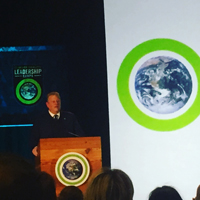
Wet Seal is among the many teen retailers mostly sequestered to malls that are not doing well in the last couple of years. Today, January 7, 2015, the hammer fell with the 338 stores to close, which is two-thirds of the company’s stores, and 3,695 employees laid-off.
Employees who were laid-off were given a one day notice, which caused huge outrage and many taking to social media with tweets like #wetsealfail, #forgetwetseal, and #boycottwetseal. There’s nothing like trending only because your brand’s negative hashtags are catching fire.
Wet Seal tried to avoid bankruptcy in December, 2014, entering into a forbearance agreement with Hudson Bay Master Fund LTD when Hudson Bay wanted to collect $27 million, which Wet Seal was in danger of defaulting.
“This was a very difficult decision to make, but after reviewing many other options since I returned to the company in September, our financial condition leaves us no other alternative than to close these stores. This is an extremely difficult time for the entire Wet Seal team, and we are doing everything we can to protect the interests of all of our stakeholders, including our employees. We acknowledge and sympathize with how hard these recent events have been on our employees, both those staying with the company and especially those who are leaving the company this week,” said CEO Edmond Thomas in a statement.
In the past few years, Wet Seal has gone through three different CEO’s. With the closures, Wet Seal expects to incur pre-tax charges from $5.4 million to $6.4 million.
In the end, Wet Seal will have 173 retail stores.
Many teen-based retailers have been struggling over the past few years, including American Eagle, Abercrombie & Fitch, and Aeropostale. Blame tends to stem around the popularity of fast-fashion retailers such as H&M, Forever 21, and Uniqlo.
However, there are other reasons for the many woes for the former kingpins of teen retailer, including heavy discounting, loss of credibility, lack of trendsetting collections, and seasonal challenges.
H&M and Zara for example, have been successful among today’s youth marketplace because they are on trend, incorporate interesting collaborations for various designers and celebrities, and have pricing that matches the marketplace’s needs. In addition, with H&M and Uniqlo, their sustainability strategies and sponsorships have been front and center, which taps into the new ways young consumers consider spending their money.
Wet Seal may just be one example of a teen retailer hemorrhaging into the new year, but 2015 will probably include many more shake-downs before the year is done.


